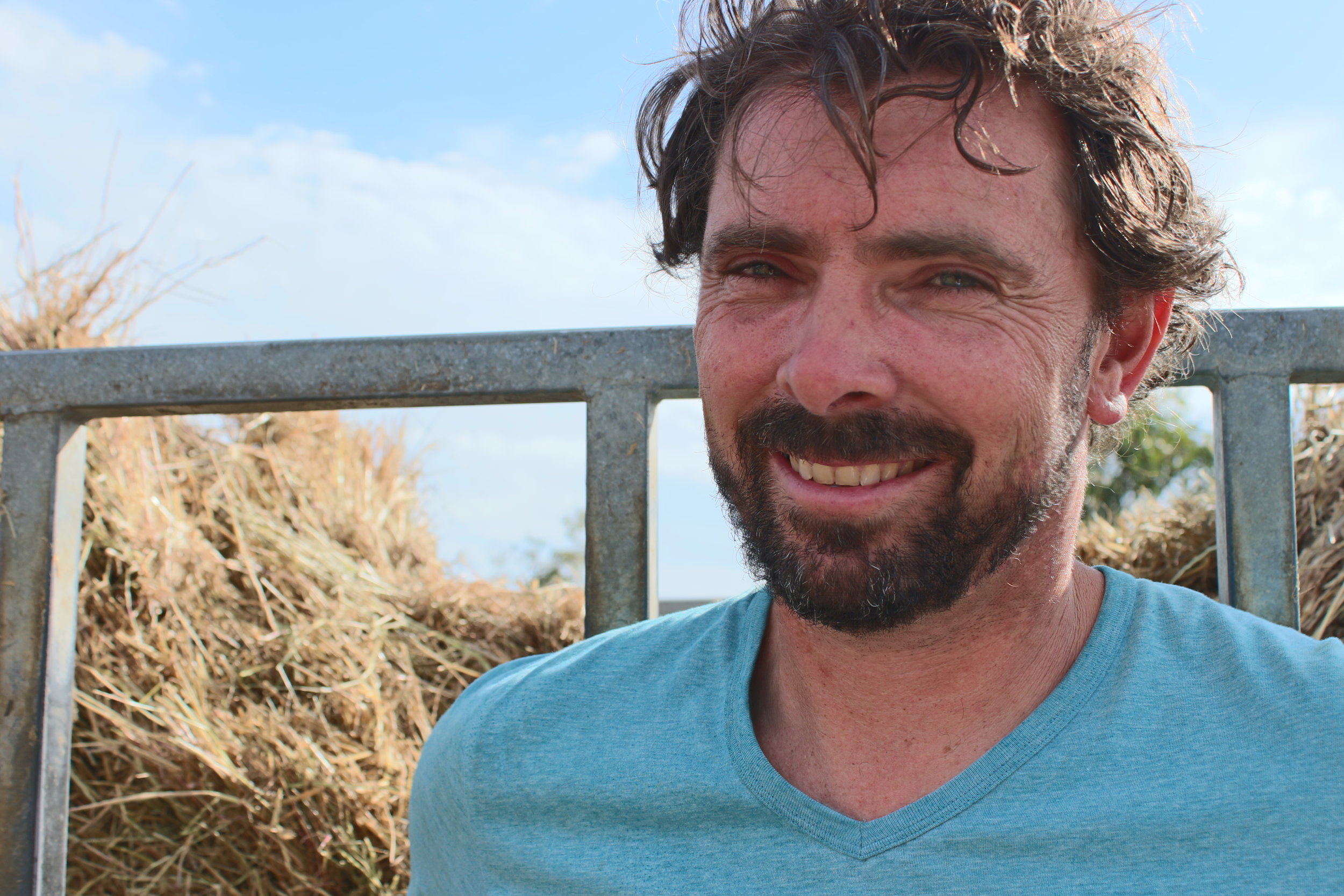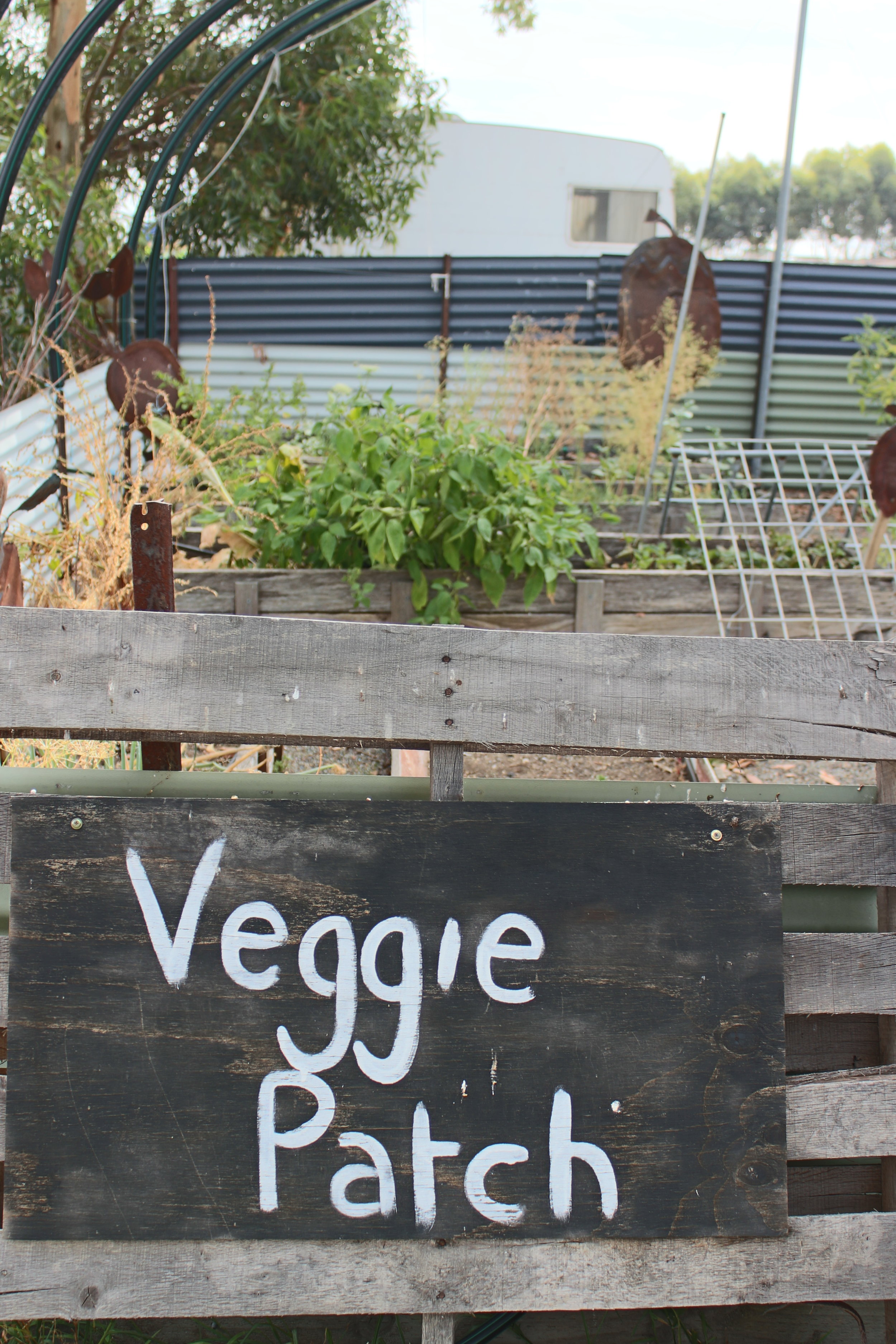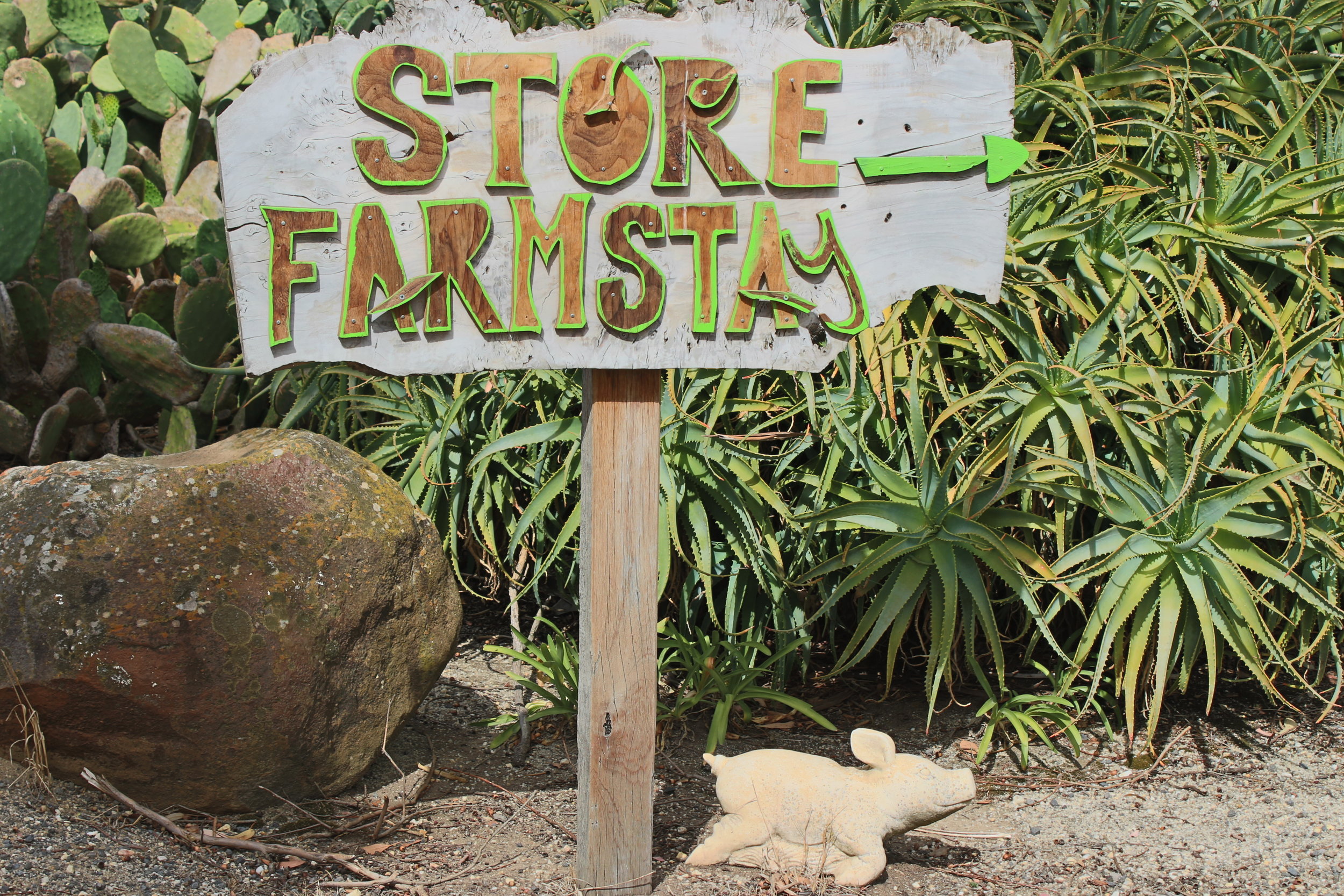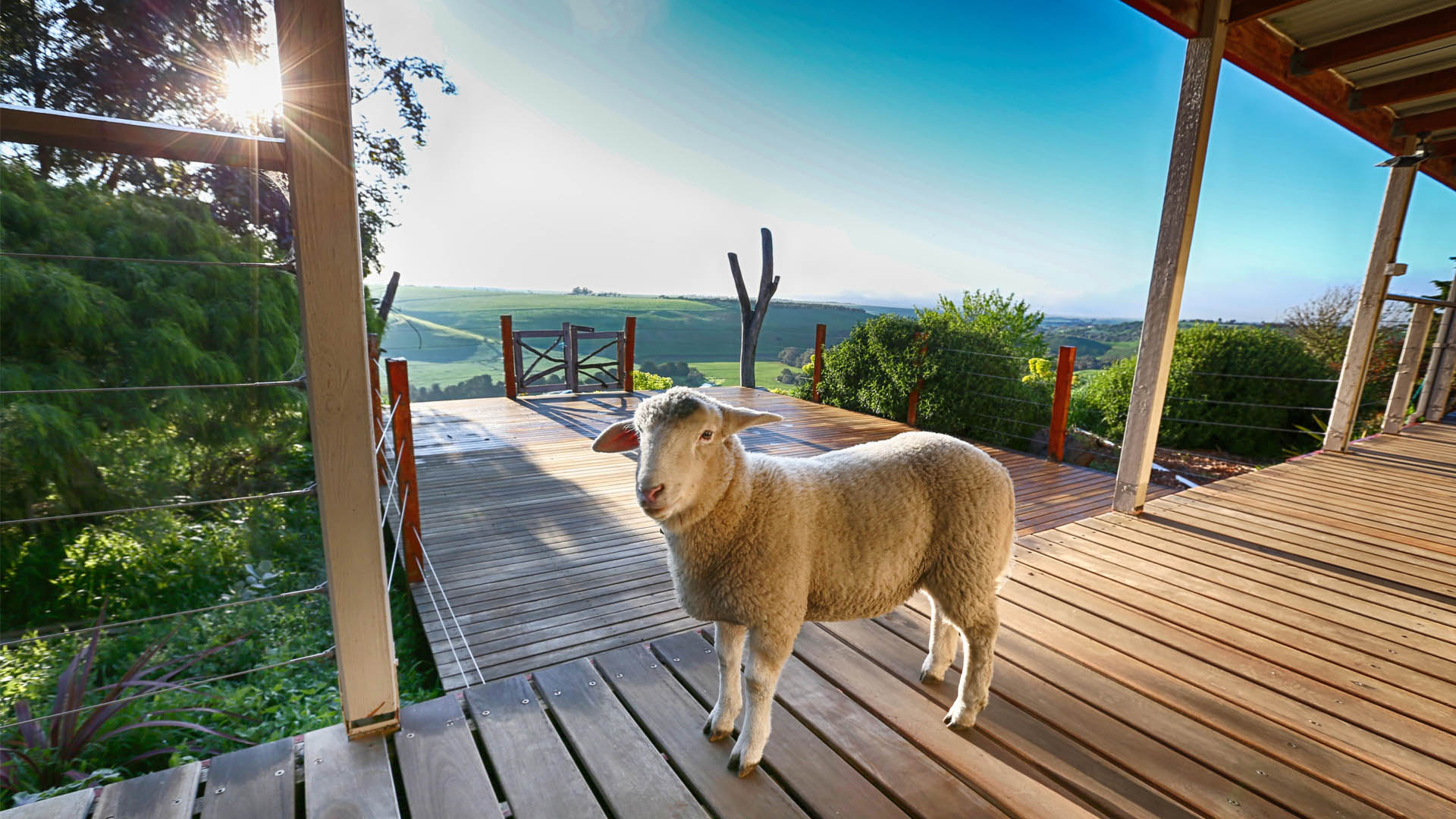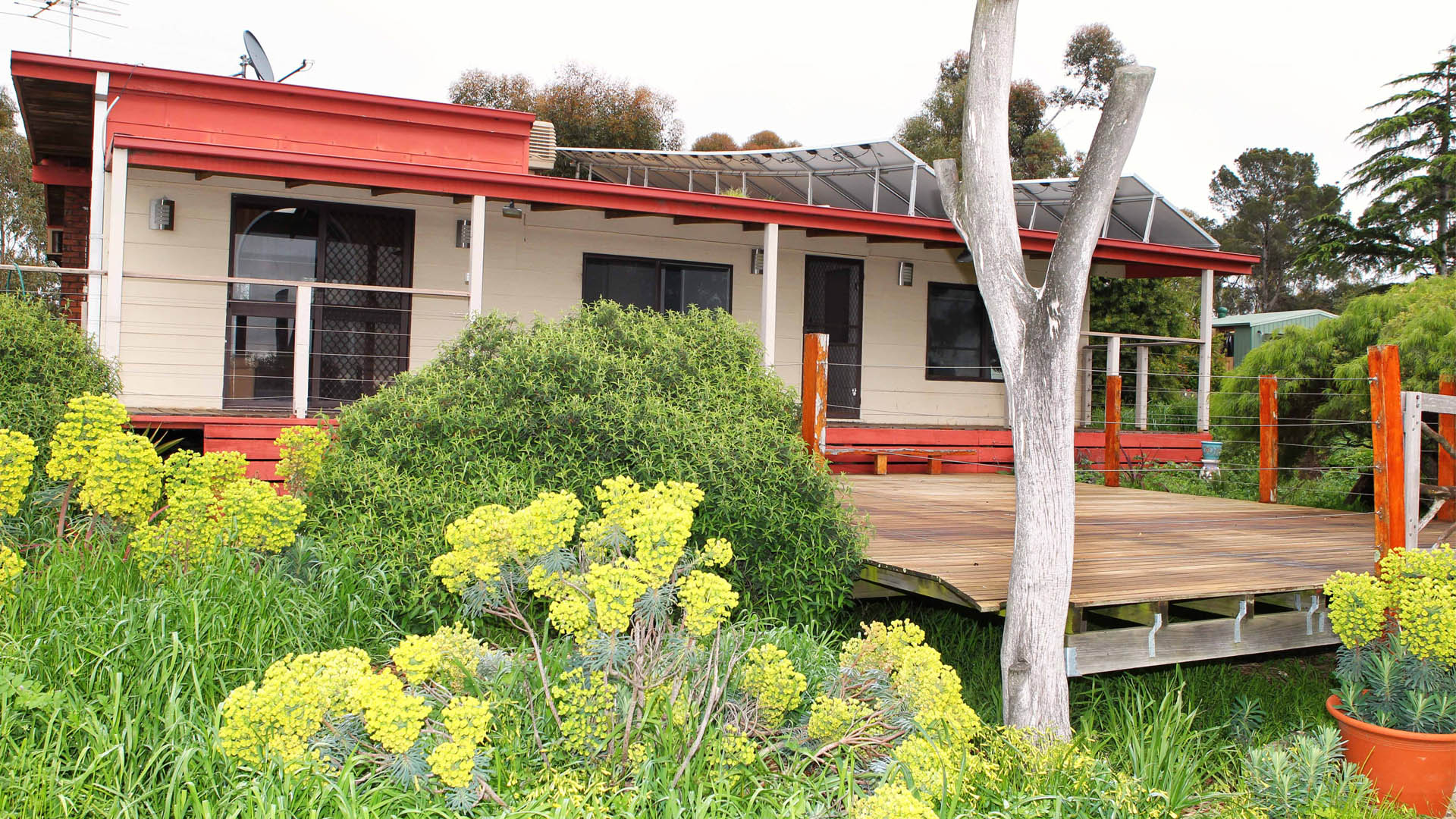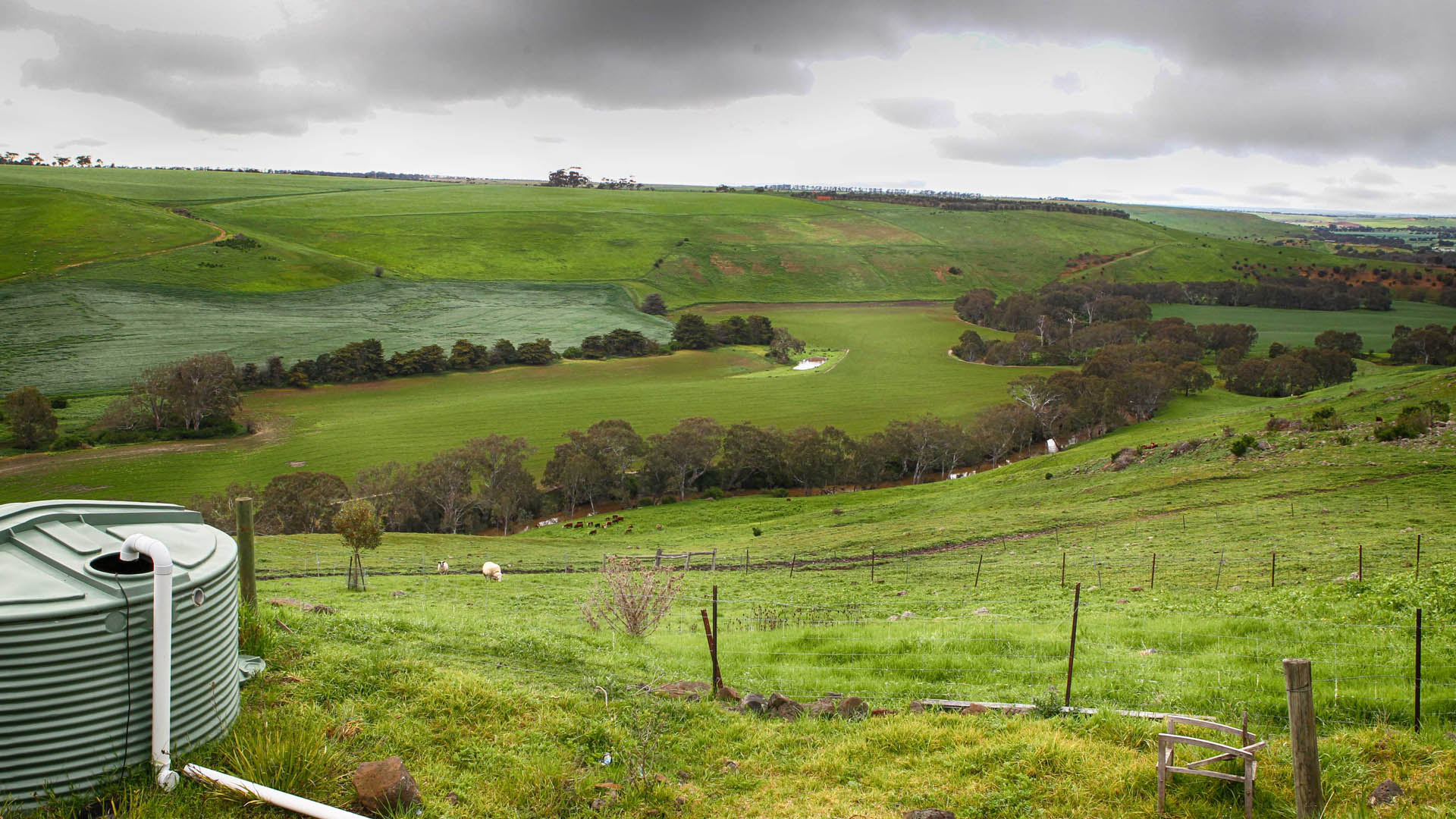Meet Chris Balazs: Farmer, Father, Food Freedom Fighter.
Sage Choice, Chief Executive Farmer - Chris Balazs
Sage Farm
Sweltering under the Australian summer sun, I found myself standing in an open field surrounded by chickens and being entertained by three bright and chatty girls who were super keen to show me around while we waited for their Dad to join us. When I arrived at Sage Farm, Chris Balazs was hard at work on his computer inside their modern ecofriendly design farmhouse and was clearly engaged in something that required his full and immediate attention. His girls took me for a walk while we waited.
When he did join us few minutes later, it was straight to business. After reminding me to get my voice recorder ready, charismatic and cheerful Chris delivered a detailed speech about his decision to become a farmer and the regenerative methods he currently uses. His pace was fast, and the words spilled from his mouth without pause, telling me that he had delivered this same presentation many times before.
Chris is the Chief Executive Farmer at Sage Choice – a small scale beef and lamb farming enterprise on 44 hectares of land in the country town of Bannockburn located north of the city of Geelong. He purchased the farm in 2011 while still working as a biopharmaceutical scientist in Melbourne.
Initially, his approach to farming was in line with modern day conventional methods that included spraying out the paddocks with a lot of herbicides, pesticides and insecticides to get a monoculture of grass that would provide enough energy for the cows to grow. He then sold them at sales yards for a very modest price. After four to five years Chris realised that at the scale he was operating, he was always going to lose money. Also, the scientific information that was available for using those inputs was highly slanted towards selling more chemicals. “The sale yards were really quite corrupt places and animal welfare had much to be desired,” he said.
Nowadays, Chris calls himself a “corporate refugee”. In 2014, he “took a vow of poverty”, ditched his corporate career and became a full-time regenerative farmer. He and his team now use a regenerative farming model and incorporate their commitment to Recycle-Reuse-Reduce-Regenerate in everything they do. As a regenerative farm, they maintain sustainability by ensuring the 'waste' products of each production system is used to feed and improve other production systems in a symbiotic like relationship. In direct contrast to conventional and industrial farming methods (which produces the majority of beef, lamb and chicken consumed by Australians), regenerative farming practices ensure animals have wide open spaces to roam and the most nutritious pasture to feed on. Soil compaction is minimalised and grass growth is hastened by regular paddock rotation and by allowing chooks to range free - ethically raised chicken meat and eggs being another upcoming branch of the Sage brand. Furthermore, Chris refuses to apply any herbicides, pesticides or artificial fertilisers.
Cows being cows. Roaming free with lots of green pasture on which to feed.
Farming Life
After the formality of the interview was over, we took a stroll to the cow paddock. I sensed that Chris was tired. He was entirely polite and hospitable but having been surrounded by many physically hard-working men in my life, I could read the signs that he was eager for the work day to be over.
Feeling like I should wrap things up quickly, I suggested that we take a few quick photos so he could get back to his business and maybe spend some time with his daughters before the start of a new day.
“Can I take a photo of you with the cows”, I asked? They were too skeptical of me to get in the shot. Knowing his herd well, Farmer Chris Balazs sat on the ground without any hesitation or attempt to sweep away the warm hay mottled cow pats directly underneath him. Immediately, they came closer. Gorgeous, strong and gentle.
As Chris relinquished the job of supporting his own body weight to the solid ground, I caught a glimpse of relief transform upon him. His hands unclenched, shoulders relaxed and head rested against a hay bale. Just, a short moment to shut his eyes and stop. To stop moving, breath deep, let go of the day. I didn’t want to disturb him so I continued to photograph all that was around me, but I just wasn’t getting the shots I needed, so I decided to follow his lead.
Much less gracefully, I swiped my brand new white sneakers across the dusty ground to form a clear and less fertile space on which to sit my behind. Straight away, I was showered with happy cow kisses and nudges. They were clearly not scared and accepted me on their turf.
Hanging with Farmer Chris.
Sitting on the ground in that cow paddock, I finally got a chance to meet the real Chris Balazs. We spoke about the reality of his life as a farmer, food sovereignty activist, entrepreneur and single dad. From that spot, we watched the sun start to set over the valley and I learned all about the challenges of being a modern-day farmer. “It’s really, really intense”, said Chris. Each day he tries to spend a few hours on the farm moving cattle, picking up hay and harvesting produce from the market garden, but a lot of it is working with customers and marketing. Chris personally contacts restaurant owners to work out their orders – a vast majority of Sage’s revenue comes from the onsite butchery (a rare feature of small-scale Australian farms), so it has to be managed quite tightly.
He also has six staff to look after and then there is the farm gate start-up business. Aside from his farm responsibilities, Chris is passionate about food sovereignty and has done much work in this field in the hopes of building an equitable, sustainable and resilient food system. Currently, he is petitioning for legislation to be changed so that mobile abattoirs could be permitted in Victoria. Lack of access to animal dispatching services is a significant problem for many small-scale farmers, with most having to travel hundreds of kilometers to access the nearest abattoir. It is also a significant deterrent for those considering their own farming enterprise. A mobile abattoir would significantly help many current and future small producers gain access to a legal animal dispatching service and help reduce precious transportation time and costs not to mention a less stressful experience for the animal and ultimately a higher quality final product.
In fact, Chris tells me that he and a small group of others will hopefully be changing Victorian law on 5 February. “The amendment to the meat industry act will go through and it’s pretty exciting. We’ve been lobbying the government and we got bi-partisan support so on the 5th and 6th February they will go for their final vote in the upper house and it will legislate that under the definition of place that there could be a mobile vehicle for the definition of an abattoir – now we’ve got to get on and build the bloody thing”.
Not only is Chris passionate about producing the best possible beef and lamb, he believes that ethical farmers, like himself, have a role to play in raising the level of maturity about the food we consume. “Big business has done a very good job at trying to hide and disconnect the consumer with the realities of industrially produced food".
Unsurprisingly, the days are long for Chris, usually starting at five in the morning and finishing at around nine in the evening. There are many challenges that most consumers would not even consider like when your animals start going backward and your veggies are dying because of having three, forty-three degree days in three weeks and needing to react to such unplanned environmental issues. Chris tells me this is why a lot of people don’t do regenerative farming.
“The other production systems remove all those environmental impacts by putting animals in sheds, but what that also does is create environmental externalities of waste from concentrated animals in small spaces. Sometimes I think, wouldn’t it be easy if I just did that, but then I look at the productivity of this small farm and it outstrips almost every farm that I know of…”
Get amongst it
Throughout the ages, our connection to the environment and the producers of our food has significantly changed. In Australia, our food production and distribution systems along with changes in eating habits have followed the same general pattern as in the United States. From around the 1960’s, we saw a significant shift in eating patterns, with consumers moving away from traditional food systems, to a mostly modern food system.
In the traditional food systems typical of the early twentieth century, consumers relied on minimally processed seasonal foods, collected or produced for self-consumption or mainly sold through informal markets. Food supply chains were often short and local, thus access to perishable foods such as animal source foods or certain fruits and vegetables were limited or seasonal.
While traditional food systems were relatively small-scale, the division of labour associated with food production involved a relatively high proportion of the population. Furthermore, both distribution and consumption were linked to established social relationships, in particular, those of status and kinship.
Food systems most prominent of the second half of the twentieth century are characterised by more diverse food options all year long, and by processing and packaging to extend foods shelf life. Agriculture has become increasingly concentrated and intensive and the old practice whereby farmers grew a range of crops and sold much of what they produced locally gave way to single-crop farming. Trade was globalised and industrial processing became the norm.
Where we were once deeply connected to foods origins, modern conveniences and an industrialised food system have created a culture of cheap food while alienating people from the landscapes that sustain them. Further, consumers – especially children, have become disconnected from opportunities to grown their own food and current and future generations of young people may lack the experience of gardening and a deeper understanding of food production, ecological knowledge and a holistic appreciation of food and nutrition.
A return to more traditional farming methods and in turn a deeper connection between producers and food consumers is the vision of Chris and many other food sovereignty activists and small-scale farmers. To ensure full transparency of the origin of the products and to help build meaningful relationships with his customers, Chris holds monthly farm tours (or by appointment), he promotes his product at food and wine festivals and even has a luxurious farm stay where consumers can have a complete paddock to plate experience.
Learning how food is grown and building positive food memories is important for a healthy lifestyle. Images: Charlene Trist
Chris envisions Sage farm becoming a gastronomic destination - visitors having an authentic paddock to plate experience and walking away with some incredible produce. “Having people at the farm is an experience that we do really well. The farm store is for people to come down and purchase their produce and have an experience while they’re here – pat the chickens and so on. The farm-stay is the uber experience so you are actually living and sleeping here and seeing the farmer walk around with all the tractors and you really being a part of it”.
Images: Courtesy of Chris Balazs
Guests at the farm-stay can actually collect the meat, vegetables, and eggs from right outside their door and the process of collecting it yourself, chopping it up and cooking and then eating is a delight for the senses, explained Chris. “I want to create an experience for people to come down and connect with where their food comes from and start asking questions about what I am putting into my mouth and where did it come from because we can quite literally eat our way to a better world and it can be quite delicious”.
A cool change came through signaling that it was finally time for me to make my move. Leaving with an armful of giant organic zucchini’s, cucumbers and beetroot greens I left feeling hopeful for our future.
